Hankook Ventus S1 Evo3 vs Michelin Pilot Sport 4: Both the Hankook Ventus S1 EVO 3 and the Michelin Pilot Sport 4 are high performing summer tires, so both of them are no going to disappoint on roads, but compared to each other, there are a few areas where one gets to be better than the other.
The Hankook EVO 3 really impresses you with it’s handling capabilities, both in wet and dry conditions, the tire offers a perfect combination of stiffness and softness to it’s sides and this provides quite satisfactory lateral traction values.
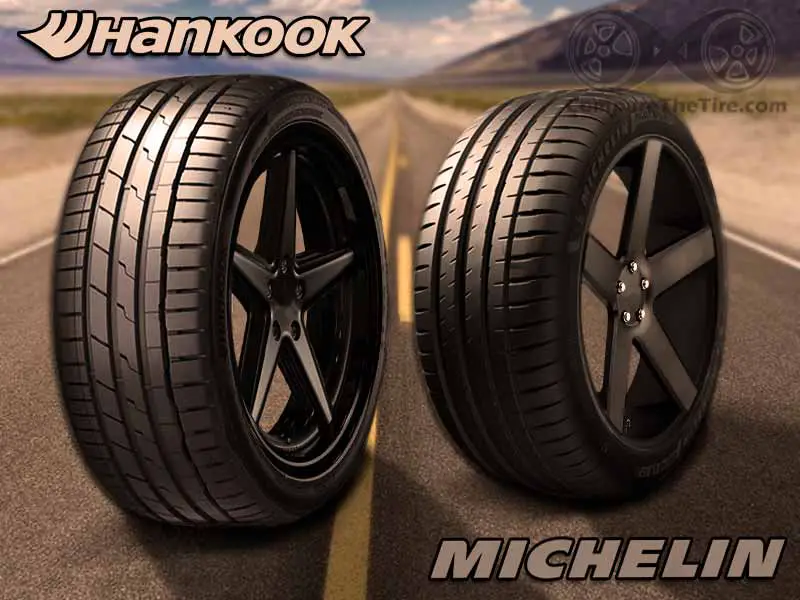
Examine the treads on these tires closely. They hold the key to knowing which to choose. In fact if you visit my "tread design" page, picking the right tire would never bother you.
On the other side, the Michelin Pilot Sport 4 is simply a champ in terms of grip. And it maintains it’s legacy with it’s successor, Michelin Pilot Sport 5 as well.
Table of Contents
Pilot Sport 4 and Hankook Ventus S1 – General Comparison
Hankook Ventus S1 Evo 3
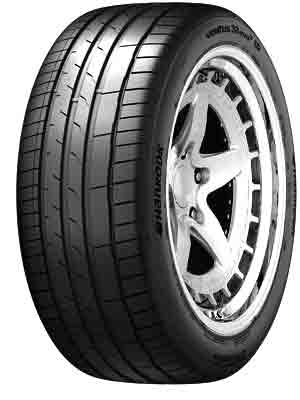
Michelin Pilot Sport 4
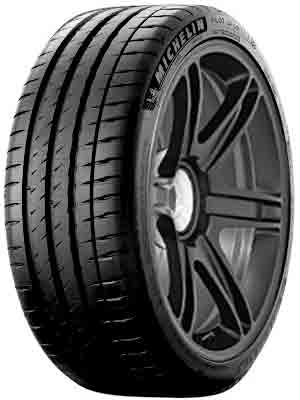
Hankook Ventus S1 features an asymmetrical tread design and a higher void ratio caused by its wide circumferential grooves. Due to the wider grooves of the tire, the contact patch is affected.
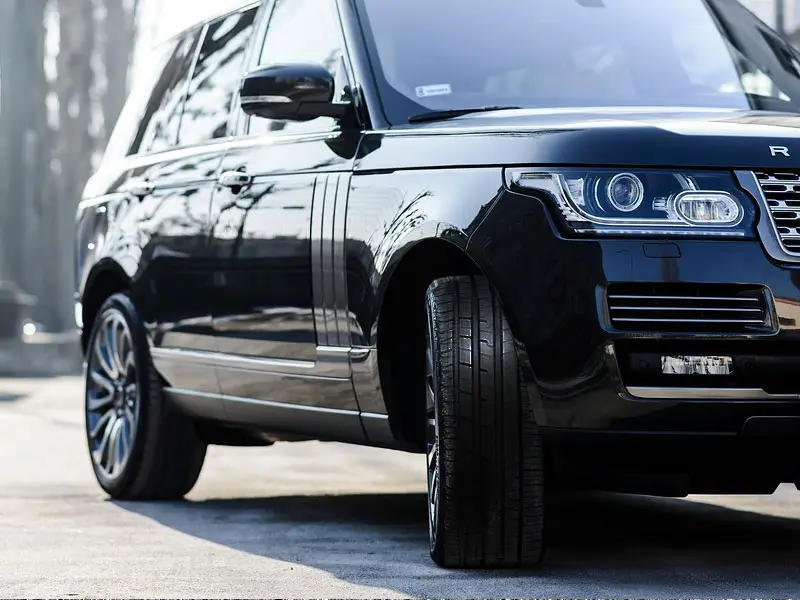
The sipes on the entire tread are also less in quantity as compared to its competitor. In addition to this, the tire’s shoulders are also open along with larger shoulder lugs. As a result, the handling capability of this tire is also reduced.
Michelin Pilot Sport 4 also features an asymmetrical tread design along with closely packed tread blocks. This increases the contact area with the road.
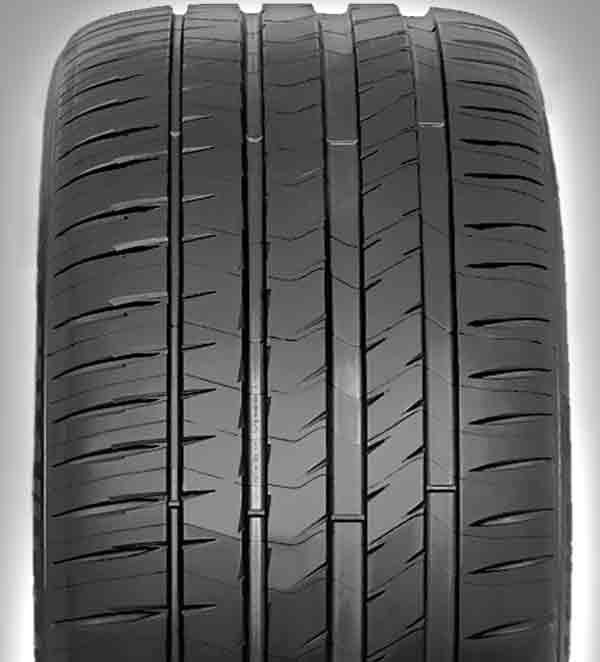
The shoulders of these tires are also optimized which allows greater contact with the road. In addition to this, numerous sipes are present on the shoulders and central part.
Grip Comparison
The grip of a tire is directly related to the contact patch between its tread and the road. Since the Hankook Ventus Evo3 features wider grooves as compared to the Sport 4, its contact patch becomes lower. As a result, its dry braking distance becomes higher and the grip on the dry surfaces is compromised.
Talking about tire’s grip on wet roads, the sipes play a major role in addition to the contact patch.
Even though the Hankook Ventus S1 Evo3 has relatively wider grooves, its sipes are lesser in number. This results in a higher wet braking distance too. So, we can say that the tire’s grip on both wet and dry roads is not very impressive.
On the other hand, Michelin Sport 4 has narrower grooves in comparison. As a result, the dry braking distance is much lower which makes it a better option on dry surfaces than its competitor.
When it comes to the wet grip, the frequent sipes and circumferential grooves are very effective. The sipes are deep enough to allow adequate water to pass through its tread.
As a result, they become a preferable option for the drivers looking for better grip on the road.
Handling Comparison
A tire’s handling is originally determined by its shoulders. Hankook Evo3 features wider shoulders as compared to Michelin.
As a result, the dry handling capability of this tire is reduced. So, the amount of speed while steering will considerably decrease, and the time required for the vehicle to complete a lap will increase.
The same is the case for wet handling. The smaller number of sipes and open shoulder blocks make Hankook Ventus Evo3 lose to its competitor by increasing the time required to complete a lap.
In comparison, the handling of Pilot Sport 4 is far more superior to Hankook Evo3. The compact shoulder design and numerous sipes allow the tire to complete a lap on both dry and wet roads much faster.
Since the dry and wet handling of these tires is much better, it is the clear winner in the handling contest.
Comparison of Hydroplaning Resistance
Hankook Ventus Evo3 has a higher void ratio due to its deep circumferential grooves.
This is what makes these tires capable of evacuating a considerable volume of water so that they can remain in contact with the road in wet conditions.
As a result, they can effectively avoid hydroplaning.
What’s more, the deep sipes also play an important role in wiping away the water from its tread.
This further aids in hydroplaning resistance.
Conversely, Pilot Sport 4 has a relatively lower void ratio as compared to Hankook Evo3. So, even though it has numerous sipes, its ability to evacuate water from its tread becomes lower.
As a result, the vehicle might face trouble standing on its ground during the rainy season.
Comparison of Rolling Resistance
The rolling resistance of a tire is the measure of friction between the tread and the road. The greater the contact patch of the tire, the higher its rolling resistance will be.
As a result, the amount of force required to overcome it, will increase.
Since Hankook Evo3 has a lower contact patch in comparison, its rolling resistance will be much lower as well.
Due to the lower rolling resistance of these tires, their fuel efficiency will also increase.
On the other hand, Michelin Pilot Sport 4 has a higher contact patch in comparison. This implies that more area of its tread will come in contact with the ground.
Therefore, its rolling resistance will be higher too. Since the rolling resistance is higher, the fuel efficiency will also decrease.
Comfort Comparison
One of the major focuses of all the grand touring tires is comfort.
The noise comfort of the Hankook Evo3 is much lower due to its wider grooves. That’s because the greater amount of air particles will get stuck inside the grooves, striking back and forth.
As a result, much noise will be produced reducing the comfort of the tire.
On the other hand, Pilot Sport 4 is a much quieter tire because of its narrower grooves. Since it features relatively narrower grooves, there is not much space left for the air particles to get stuck inside and produce noise.
This is what makes these tires a more comfortable option than Evo3.
Side Note: In terms of noise, no other tire was able to beat the Pirelli P Zero PZ4.
Durability & Treadwear
Since Hankook Ventus S1 Evo3 has a higher void ratio, its contact patch is decreased. This in turn reduces the rolling resistance of these tires. The lower rolling resistance indicates the tire’s lower treadwear as well.
In addition to this, these tires are manufactured using the silica-based tread compound. This results in the stiff coupling of the carcass and a highly refined tire.
As a result, the users get an incredibly durable tire. When the lower treadwear is combined with the higher durability, the mileage of the tire is also increased.
When it comes to the Pilot Sport 4, it features a higher contact patch as compared to the Hankook Evo3.
As a result, the treadwear of the tire is increased. Other than that, the walls of this tire are quite stiff. This is what makes it quite durable. However, they are not as durable as their counterpart.
So, in short, when it comes to durability and treadwear, the Evo3 is a much better option.
Which tire is budget friendly?
Talking about the price of both tires, Hankook Evo3 is higher-priced due to its incredible hydroplaning resistance, lower rolling resistance, higher fuel efficiency, and durability.
However, it also has a major drawback that its traction is not much effective relatively. On the other hand, the Pilot Sport 4 is a lower-priced tire that provides excellent traction and comfort.
So, you may choose the one depending upon your requirements.
In conclusion:
Although both summer tires are very high performing, there are a still a few things to keep in mind with them, the Michelin Pilot Sport 4 is simply great when we talk about the grip, so with this tire, you get amazing braking performance.
But in the handling department the Hankook Ventus takes the lead, in both wet and dry conditions, the tire also provides you with longer tread life and better fuel efficiency.



